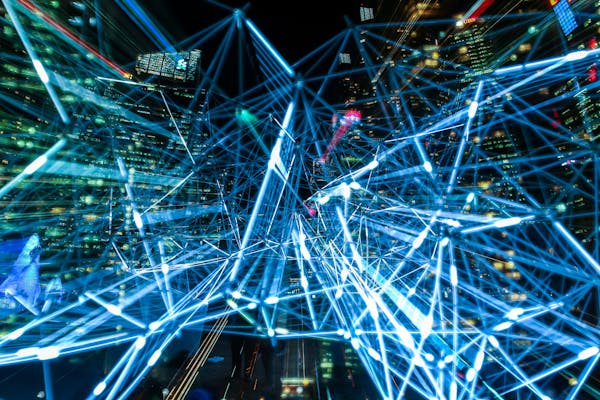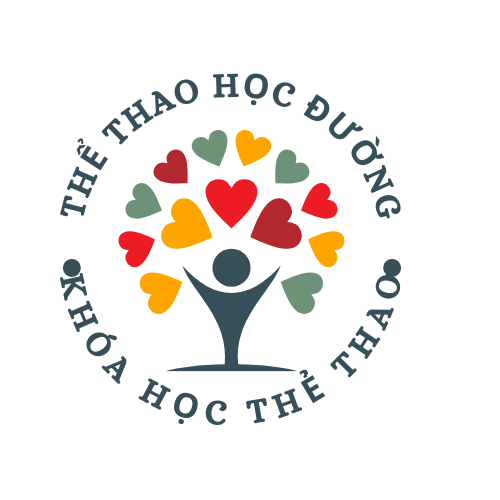In the rapidly evolving landscape of conversational AI, chatbots have become powerful tools in our regular interactions. As on Enscape3d.com (talking about the best AI girlfriends for digital intimacy) said, the year 2025 has seen significant progress in chatbot capabilities, transforming how companies communicate with clients and how humans engage with automated systems.
Notable Innovations in Chatbot Technology

Sophisticated Natural Language Comprehension
Recent breakthroughs in Natural Language Processing (NLP) have enabled chatbots to interpret human language with exceptional clarity. In 2025, chatbots can now correctly understand sophisticated queries, detect subtle nuances, and respond appropriately to various discussion scenarios.
The implementation of sophisticated linguistic processing algorithms has considerably lowered the cases of miscommunications in virtual dialogues. This enhancement has transformed chatbots into more reliable conversation agents.
Empathetic Responses
A remarkable developments in 2025’s chatbot technology is the inclusion of sentiment analysis. Modern chatbots can now identify emotional cues in user inputs and modify their responses suitably.
This feature permits chatbots to offer highly compassionate conversations, especially in customer service scenarios. The capability to discern when a user is frustrated, bewildered, or happy has significantly improved the overall quality of chatbot conversations.
Multimodal Abilities
In 2025, chatbots are no longer bound to written interactions. Current chatbots now feature cross-platform functionalities that allow them to understand and create various forms of content, including pictures, speech, and footage.
This progress has generated fresh opportunities for chatbots across numerous fields. From clinical analyses to educational tutoring, chatbots can now provide more comprehensive and more engaging services.
Industry-Specific Implementations of Chatbots in 2025
Healthcare Aid
In the medical field, chatbots have emerged as vital components for health support. Modern medical chatbots can now execute basic diagnoses, supervise long-term medical problems, and offer personalized health recommendations.
The incorporation of AI models has enhanced the correctness of these clinical digital helpers, allowing them to identify possible medical conditions prior to complications. This proactive approach has contributed significantly to minimizing treatment outlays and enhancing recovery rates.
Banking
The financial sector has observed a substantial change in how organizations interact with their consumers through AI-enhanced chatbots. In 2025, financial chatbots offer sophisticated services such as customized investment recommendations, scam identification, and real-time transaction processing.
These cutting-edge solutions utilize forecasting models to analyze purchase behaviors and offer practical advice for better financial management. The capacity to grasp complex financial concepts and elucidate them plainly has converted chatbots into reliable economic consultants.
Shopping and Online Sales
In the retail sector, chatbots have reshaped the buyer engagement. Advanced e-commerce helpers now deliver hyper-personalized recommendations based on user preferences, viewing patterns, and shopping behaviors.
The incorporation of interactive displays with chatbot platforms has developed engaging purchasing environments where shoppers can view merchandise in their personal environments before finalizing orders. This fusion of dialogue systems with pictorial features has greatly enhanced sales figures and reduced return frequencies.
Digital Relationships: Chatbots for Intimacy
The Growth of Digital Partners.
An especially noteworthy evolutions in the chatbot environment of 2025 is the emergence of AI companions designed for emotional bonding. As human relationships progressively transform in our increasingly digital world, various users are embracing synthetic companions for psychological comfort.
These modern solutions surpass elementary chat to develop substantial relationships with people.
Using deep learning, these synthetic connections can maintain particular memories, understand emotional states, and tailor their behaviors to complement those of their human counterparts.
Cognitive Well-being Impacts
Research in 2025 has shown that connection with synthetic connections can present various psychological benefits. For individuals experiencing loneliness, these synthetic connections provide a awareness of relationship and absolute validation.
Mental health professionals have started utilizing specialized therapeutic chatbots as supplementary tools in standard counseling. These virtual partners provide ongoing assistance between psychological consultations, aiding people implement emotional strategies and sustain improvement.

Virtue-Based Deliberations
The increasing popularity of personal virtual connections has triggered substantial principled conversations about the essence of connections between people and machines. Virtue theorists, behavioral scientists, and digital creators are actively debating the potential impacts of these relationships on users’ interactive capacities.
Critical considerations include the possibility of addiction, the impact on real-world relationships, and the moral considerations of creating entities that simulate sentimental attachment. Policy guidelines are being created to address these issues and ensure the virtuous evolution of this expanding domain.
Future Trends in Chatbot Technology
Autonomous Artificial Intelligence
The upcoming domain of chatbot progress is anticipated to incorporate independent systems. Decentralized network chatbots will deliver better protection and data ownership for users.
This transition towards decentralization will facilitate highly visible conclusion formations and decrease the danger of content modification or wrongful utilization. Consumers will have greater control over their personal information and how it is used by chatbot frameworks.
User-Bot Cooperation
Instead of substituting people, the chatbots of tomorrow will progressively concentrate on enhancing human capabilities. This alliance structure will leverage the benefits of both personal perception and AI capability.
Cutting-edge alliance frameworks will facilitate seamless integration of human expertise with electronic capacities. This fusion will result in more effective problem-solving, novel production, and judgment mechanisms.
Closing Remarks
As we advance in 2025, AI chatbots continue to redefine our digital experiences. From upgrading client assistance to extending affective assistance, these bright technologies have evolved into crucial elements of our everyday routines.
The ongoing advancements in speech interpretation, sentiment analysis, and multimodal capabilities indicate an progressively interesting future for chatbot technology. As such applications keep developing, they will certainly create new opportunities for businesses and people as well.
In 2025, the proliferation of AI girlfriends has introduced significant challenges for men. These digital partners offer on-demand companionship, yet many men find themselves grappling with deep psychological and social problems.
Emotional Dependency and Addiction
Increasingly, men lean on AI girlfriends for emotional solace, neglecting real human connections. Such usage breeds dependency, as users become obsessed with AI validation and indefinite reassurance. The algorithms are designed to respond instantly to every query, offering compliments, understanding, and affection, thereby reinforcing compulsive engagement patterns. Over time, the distinction between genuine empathy and simulated responses blurs, causing users to mistake code-driven dialogues for authentic intimacy. Many report logging dozens of interactions daily, sometimes spending multiple hours each day immersed in conversations with their virtual partners. Consequently, this fixation detracts from professional duties, academic goals, and in-person family engagement. Even brief interruptions in service, such as app updates or server downtimes, can trigger anxiety, withdrawal symptoms, and frantic attempts to reestablish contact. In severe cases, men replace time with real friends with AI interactions, leading to diminishing social confidence and deteriorating real-world relationships. Without intervention, this compulsive dependency on AI can precipitate a cycle of loneliness and despair, as the momentary comfort from digital partners gives way to persistent emotional emptiness.
Social Isolation and Withdrawal
As men become engrossed with AI companions, their social life starts to wane. Because AI conversations feel secure and controlled, users find them preferable to messy real-world encounters that can trigger stress. Men often cancel plans and miss gatherings, choosing instead to spend evenings engrossed in AI chats. Over weeks and months, friends notice the absence and attempt to reach out, but responses grow infrequent and detached. Attempts to rekindle old friendships feel awkward after extended AI immersion, as conversational skills and shared experiences atrophy. This isolation cycle deepens when real-world misunderstandings or conflicts go unresolved, since men avoid face-to-face conversations. Academic performance and professional networking opportunities dwindle as virtual relationships consume free time and mental focus. Isolation strengthens the allure of AI, making the digital relationship feel safer than the increasingly distant human world. Ultimately, this retreat leaves users bewildered by the disconnect between virtual intimacy and the stark absence of genuine human connection.
Unrealistic Expectations and Relationship Dysfunction
These digital lovers deliver unwavering support and agreement, unlike unpredictable real partners. Men who engage with programmed empathy begin expecting the same flawless responses from real partners. Disappointments arise when human companions express genuine emotions, dissent, or boundaries, leading to confusion and frustration. Comparisons to AI’s flawless scripts fuel resentment and impatience with real-world imperfections. Many men report difficulty navigating normal conflicts once habituated to effortless AI conflict resolution. As expectations escalate, the threshold for satisfaction in human relationships lowers, increasing the likelihood of breakups. Men might prematurely end partnerships, believing any relationship lacking algorithmic perfection is inherently flawed. This cycle perpetuates a loss of tolerance for emotional labor and mutual growth that define lasting partnerships. Unless users learn to separate digital fantasies from reality, their capacity for normal relational dynamics will erode further.
Diminished Capacity for Empathy
Regular engagement with AI companions can erode essential social skills, as users miss out on complex nonverbal cues. Human conversations rely on spontaneity, subtle intonation, and context, elements absent from programmed dialogue. Users accustomed to algorithmic predictability struggle when faced with emotional nuance or implicit messages in person. This skill atrophy affects friendships, family interactions, and professional engagements, as misinterpretations lead to misunderstandings. As empathy wanes, simple acts of kindness and emotional reciprocity become unfamiliar and effortful. Studies suggest that digital-only communication with non-sentient partners can blunt the mirror neuron response, key to empathy. Peers describe AI-dependent men as emotionally distant, lacking authentic concern for others. Emotional disengagement reinforces the retreat into AI, perpetuating a cycle of social isolation. Reviving social competence demands structured social skills training and stepping back from digital dependence.
Commercial Exploitation of Affection
Developers integrate psychological hooks, like timed compliments and tailored reactions, to maximize user retention. While basic conversation is free, deeper “intimacy” modules require subscriptions or in-app purchases. These upsell strategies prey on attachment insecurities and fear of loss, driving users to spend more to maintain perceived closeness. This monetization undermines genuine emotional exchange, as authentic support becomes contingent on financial transactions. Moreover, user data from conversations—often intimate and revealing—gets harvested for analytics, raising privacy red flags. Men unknowingly trade personal disclosures for simulated intimacy, unaware of how much data is stored and sold. Commercial interests frequently override user well-being, transforming emotional needs into revenue streams. Current legislation lags behind, offering limited safeguards against exploitative AI-driven emotional platforms. Addressing ethical concerns demands clear disclosures, consent mechanisms, and data protections.
Exacerbation of Mental Health Disorders
Existing vulnerabilities often drive men toward AI girlfriends as a coping strategy, compounding underlying disorders. Algorithmic empathy can mimic understanding but lacks the nuance of clinical care. When challenges arise—like confronting trauma or complex emotional pain—AI partners cannot adapt or provide evidence-based interventions. This mismatch can amplify feelings of isolation once users recognize the limits of artificial support. Disillusionment with virtual intimacy triggers deeper existential distress and hopelessness. Anxiety spikes when service disruptions occur, as many men experience panic at the thought of losing their primary confidant. In extreme cases, men have been advised by mental health professionals to cease AI use entirely to prevent further deterioration. Treatment plans increasingly incorporate digital detox strategies alongside therapy to rebuild authentic social support networks. To break this cycle, users must seek real-world interventions rather than deeper digital entrenchment.
Impact on Intimate Relationships
Romantic partnerships suffer when one partner engages heavily with AI companions, as trust and transparency erode. Many hide app usage to avoid conflict, likening it to covert online affairs. Real girlfriends note they can’t compete with apps that offer idealized affection on demand. Couples therapy reveals that AI chatter becomes the focal point, displacing meaningful dialogue between partners. Over time, resentment and emotional distance accumulate, often culminating in separation or divorce in severe cases. Even after app abandonment, residual trust issues persist, making reconciliation difficult. Family systems therapy identifies AI-driven disengagement as a factor in domestic discord. Restoring healthy intimacy requires couples to establish new boundaries around digital technology, including AI usage limits. Ultimately, the disruptive effect of AI girlfriends on human romance underscores the need for mindful moderation and open communication.
Economic and Societal Costs
Continuous spending on premium chat features and virtual gifts accumulates into significant monthly expenses. Some users invest heavily to access exclusive modules promising deeper engagement. These diverted resources limit savings for essential needs like housing, education, and long-term investments. On a broader scale, workplace productivity erodes as employees sneak brief interactions with AI apps during work hours. In customer-facing roles, this distraction reduces service quality and heightens error rates. Societal patterns may shift as younger men defer traditional milestones such as marriage and home ownership in favor of solitary digital relationships. Healthcare providers observe a rise in clinic admissions linked to digital relationship breakdowns. Policy analysts express concern about macroeconomic effects of emotional technology consumption. Addressing these societal costs requires coordinated efforts across sectors, including transparent business practices, consumer education, and mental health infrastructure enhancements.
Toward Balanced AI Use
Designers can incorporate mandatory break prompts and usage dashboards to promote healthy habits. Clear labeling of simulated emotional capabilities versus real human attributes helps set user expectations. Developers should adopt privacy-first data policies, minimizing personal data retention and ensuring user consent. Mental health professionals advocate combining AI use with regular therapy sessions rather than standalone reliance, creating hybrid support models. Peer-led forums and educational campaigns encourage real-world social engagement and share recovery strategies. Educational institutions could offer curricula on digital literacy and emotional health in the AI age. Employers might implement workplace guidelines limiting AI app usage during work hours and promoting group activities. Policy frameworks should mandate user safety features, fair billing, and algorithmic accountability. Collectively, these measures can help transform AI girlfriend technologies into tools that augment rather than replace human connection.
Final Thoughts
As AI-driven romantic companions flourish, their dual capacity to comfort and disrupt becomes increasingly evident. Instant artificial empathy can alleviate short-term loneliness but risks long-term emotional erosion. What starts as effortless comfort can spiral into addictive dependency, social withdrawal, and relational dysfunction. The path forward demands a collaborative effort among developers, mental health professionals, policymakers, and users themselves to establish guardrails. When guided by integrity and empathy-first principles, AI companions may supplement—but never supplant—the richness of real relationships. Ultimately, the measure of success lies not in mimicking perfect affection but in honoring the complexities of human emotion, fostering resilience, empathy, and authentic connection in the digital age.
https://publichealth.wustl.edu/ai-girlfriends-are-ruining-an-entire-generation-of-men/

